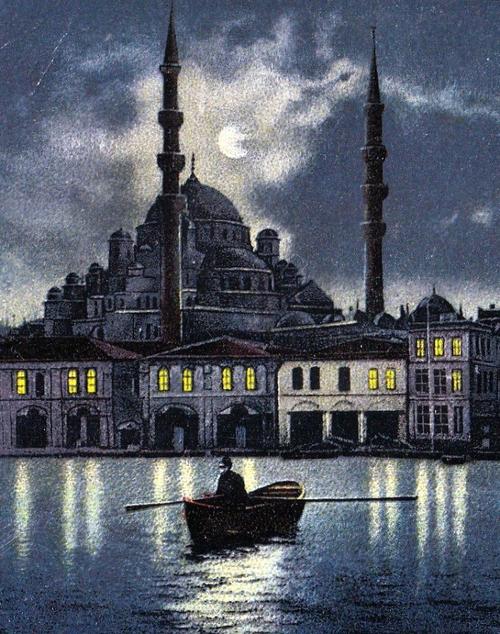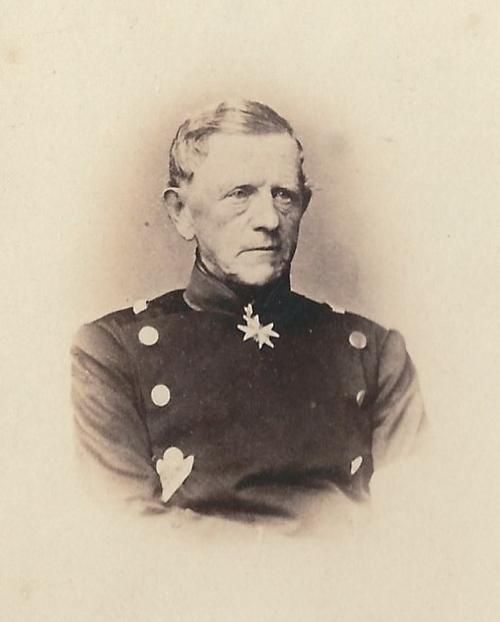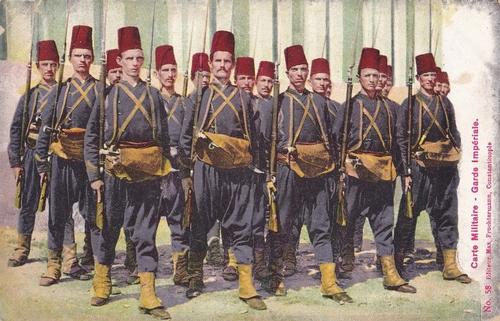Prussian-German Officers Traveling in the Middle East, 1835-1914
by Oliver Stein
One of the most significant Prussian-German military missions in the Ottoman Empire began as a private journey. In 1835 Captain Helmuth von Moltke asks his superiors to authorize a six-month vacation so that he can visit Greece, Constantinople and Italy. Such trips to the sites of antiquity are not rare among officers. As long as they can promise to do something useful for official purposes, they can even keep earning their salary. Accompanied by a Lieutenant, Moltke crosses through the Balkans. At the end of November 1835, he reaches a city for which he had only planned a three-week stay: Constantinople. He writes to his mother, enchanted from the spell that surrounds him at the sight of the capital. During his stay, he is called before the Ottoman Minister of War, who asks Moltke whether he would stay longer in Constantinople; Sultan Mahmud is looking for European officers for the training of his army, which is still in the process of reconstruction. Moltke, after receiving approval from the Prussian king, takes the offer. With this decision, Constantinople transforms from a vacation-traveling destination to his place of service for several years. Along with other Prussian officers that arrive later, Moltke serves from 1836 to 1839 as a member of the official Prussian military mission that is to contribute to the modernization of the Ottoman Army. One of the enduring fruits of this stay, however, has little to do with Moltke’s official obligations: his travel book, published in 1841 under the title Briefe über Zustände und Begebenheiten in der Türkei (Letters on Conditions and Events in Turkey), is published in six editions before the end of the 19th century and belongs to this day to the canon of German travel literature.
Helmuth von Moltke
Image Credit: Author's Personal Collection, Photo: Oliver Stein
Ottoman infantrymen before the Great War
Image Credit: © Estate of Heinrich Frank
Moltke’s military mission attracts additional delegations from the Prussian military to travel to Constantinople. While these trips have primarily touristic motives, they also serve some diplomatic functions. For example, Prince Adalbert und August of Prussia, accompanied by a number of Prussian officers, use their participation in a military exercise in southern Russia in order to ultimately join a trip on the Mediterranean Sea that takes them through Constantinople. These men are even able to enjoy a sightseeing program organized by the Sultan himself. Prince August of Prussia, however, who works intensively towards the reformation of the Prussian artillery in his native land, utilizes this stay for more than just touristic pleasure. Being thoroughly interested in the state of the Ottoman artillery, he inspects the fortifications and barracks when he is not visiting mosques and palaces. After returning to Prussia, Prince August writes a memorandum for the Sultan with ideas for the reorganization of the Turkish army. Prince Augusts’ involvement lays the foundation for the next Prussian military mission: the artillery commando under the leadership of Captain von Kuczkowski. Prince August of Prussia’s trip therefore represents another pivotal moment in the development and intensification of Prussian-Ottoman military relations.
General Friedrich Graf von Wrangel, also popularly known as “Papa Wrangel”, is yet another officer to visit Constantinople. His trip, taken in 1853, is to inspect the Ottoman artillery trained by von Kuczkowski. This is a task that does not fall within Wrangel’s typical scope of duties considering that he is, at this point in time, the Governor of Berlin. The officers that want to visit the Orient, but that do not have the opportunity to travel on such official business, must resort to privately organized trips. Especially beginning at the end of the 19th century, an increasing number of officers travel to the countries on the Mediterranean. In this way, many officers, whether they be discharged or taking vacation time during their service, are able to reach the Ottoman Empire, and in particular Constantinople and Jerusalem. In this kind of educational journey, officers typically could not and did not want to dismiss their military interests. Several of them author reports, in which they communicate their observations and experiences to the military staff or ministry of war. The Prussian Captain Karl Rudolph Müller, for instance, who visits Constantinople in 1873 with travel group, tries to obtain permission to visit Ottoman barracks out of simple curiosity. The Ottoman Minister of War personally grants him this permission and Müller, who is only staying in Constantinople as a tourist, is then subsequently received by an Ottoman divisional commander with regiment music and isgiven the honor to inspect an entire regiment standing in formation.
Book cover 'Anatolische Ausflüge' [Anatolian excursion]
Image Credit: Personal collection, Photo: Oliver Stein
In the second half of the 19th century, another kind of traveling becomes increasingly popular among officers: military research trips. With the increasing technologization of the military, that demands scientifically qualified specialists, a phenomenon occurs in which soldiers are increasingly taking over the function of scientists. Within the context of this development, cartography and geometry hold an especially high status in the military. Many officers, especially those from the general staff, are entrusted with traveling to distant regions in order to draw maps of them. These men use this activity primarily as an opportunity to conduct ethnographical and archaeological studies. An early example of this is Major Ludwig von Wildenbruch, General Consul in Syria from 1829 to 1836, whose geographical field studies as an amateur scientist laid the groundwork that enables him to become a pioneer in Palestine studies in Prussia. Many active officers are also to be found among the traveling researchers and expedition leaders that break off into unknown regions. In doing so they fulfill several functions and tasks: while they report their findings for the scientific community, they also, not infrequently, attempt to gather information that could be of use for strategic military interests or for economic interests. This is the case, for example, when the geological trips to the Ottoman Empire also aim to secure mineral resources so that they might be exploited by German businesses. At the beginning of 1910, General Eduard von Hoffmeister undertakes a journey through Armenia in order to trace the march of the ancient Greek commander Xenophon. The scope of this task, stretching between the realms of geography and history, is further augmented by Hoffmeister’s intention to meanwhile assess the Russian-Ottoman border territories from a military perspective. Additionally, the German military instructors that, beginning in 1882, have found themselves on military missions in the Ottoman Empire, are usually able to find sufficient opportunities for travel within the land. Among these opportunities are the regular inspection trips that take men throughout the empire. Lieutenant-Colonel Colmar von der Goltz, who already had proved himself to be a talented writer, uses such opportunities to record his impressions of the land and people in several magazine articles. During the year in which he returns from the Ottoman Empire, von der Goltz publishes his book Anatolische Reisen (Anatolia Travels), an account that leaves out military concerns completely and can be seen as a pure travel book.
Finally during the First World War, in which the Ottoman Empire and Germany are allies, hundreds of officers travel to the Middle East. Even when the service in this region is ultimately compulsory, it is still perceived, as plenty of personal testimonials can attest, as an interesting journey. In addition to the mission of combat and their service obligations, these men have opportunities to investigate largely unknown cultural spaces of the Middle East. A great number of German soldiers are thereby able to reach areas that lie far from the typical travel routes. With this in mind, a German Captain named Wrobel considers to himself: „Who previously, besides single researchers, has been able to get to know the insides of the Orient so precisely?”
A look at the 19th century makes the usefulness of these officers’ travels to the Middle East evident: whether it be ultimately for the good of research and science, or for developing relationships with the Ottoman Empire. Official Prussian-Ottoman military contacts could even arise or deepen through private travels that do not have any military intentions, as in the case of Moltke or Prince August of Prussia. Especially in the second half of the 19th century, many travelers were significantly influenced by research and ultimately fulfilled a double function: the scientific investigation of the Middle East and the expansion of military or economically relevant knowledge from this region.
Selected Sources
- Goltz, Colmar Frhr. von der: Anatolische Ausflüge. Reisebilder, Berlin 1896.
- Hoffmeister, E[duard] von: Durch Armenien. Eine Wanderung und der Zug Xenophons bis zum Schwarzen Meere. Eine Militär-Geographische Studie, Leipzig 1911.
- Moltke, Helmuth von: Briefe über Zustände und Begebenheiten in der Türkei aus den Jahren 1835 bis 1839, Berlin 1841.
- Müller, Karl Rudolph von: Briefe und Notizen betreffend Orientreise 1873, Hessisches Staatsarchiv Marburg, Bestand 340 Karl Rudolph von Müller, Nr. 6.
- Wrobel, Heinrich: Acht Kriegsmonate in der asiatischen Türkei. Meine Erlebnisse während des Feldzuges 1916 als Führer einer Kraft-Wagen-Abteilung, Berlin 1917.
Citation
Stein, Oliver: Prussian-German officers traveling in the Middle East, 1835-1914 (2015), URL: http://www.mwme.eu/essays/index.html
---
---
Translated by Westrey Page (Freie Universität Berlin)
---



![Book cover 'Anatolische Ausflüge' [Anatolian excursion]](/en/e/mwme/Essay-Bilder/Traveling_4.jpg?width=500)
